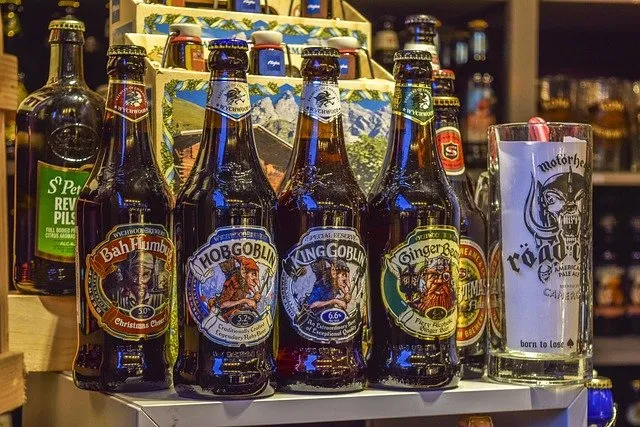Alcohol in a person’s system can be detected in several different ways. And these techniques are trustworthy. These tests will show you have had one or two drinks even if you are not drunk or even just a little buzzed.
Alcohol consumption and alcohol concentration are key factors in alcohol testing. Therefore, the effects of a drink with a 10% ABV will be more noticeable than those of a drink with a 3% ABV.
Given this, it is understandable why non-alcoholic beer aficionados and drinkers are interested in alcohol testing using non-alcoholic beer. The most often-asked questions about alcohol testing and how it applies to non-alcoholic beer will be addressed in this article.
Read More: The Best Nutmeg Beer: Top 10
What Is An EtG Test?
The EtG test is used to find the presence of ethyl glucuronide in urine. Ethanol’s metabolite has significance because one component that makes up this compound can be seen as an analog for other compounds like benzene or tobacco alkaloids found within cigarettes; meaning they’re all related.
The body goes into overdrive when you drink alcohol and eliminate it as quickly as possible. Because alcohol is a poison and the liver dislikes toxins and other foreign substances in the body, this occurs. Within an hour, the body breaks down a typical drink’s 12 grams of alcohol.
Read More: The Best Thyme Beer: Top 10
The liver is where most metabolism takes place. Most are defined as more than 90%. Alcohol can also be broken down and eliminated by sat, breath, and urine.
How Alcohol Tests Function
A reliable sign of alcohol usage is provided by ethyl glucuronide, a direct biomarker of alcohol use. Since it has a longer half-life than ethanol, it is still detectable hours after the body has eliminated all ethanol.
Earlier research indicated that it may be detected for up to 72 hours after consuming alcohol, while more recent research has shown that it can be detected for up to five days. In general, urine EtG values of more than 100ng/ml signify alcohol consumption.
Will Non-Alcoholic Beer Show Up On ETG?
No, non-alcoholic beer typically does not show up on an ethyl glucuronide (ETG) test. it is After a person consumes food or drinks with trace amounts of alcohol, such as nonalcoholic beer, yeast mixed with sugar, and mouthwash containing alcohol, urine EtG levels above 0.1 mg/l can be measured.
Read More: Can You Get Drunk Off Non-Alcoholic Beer?
How much alcohol is in your blood at any particular time depends on how much alcohol is in it? Law enforcement uses a preliminary blood alcohol concentration (BAC) test to ascertain whether a person has consumed alcohol. Your BAC can indeed increase with just one drink, but there are some ways to do so more quickly.
These tactics include binge drinking and heavy drinking, for instance. Before alcohol is absorbed by the body and enters the bloodstream, it first passes via the stomach and small intestine.
The BAC after drinking can be calculated in a matter of minutes, but it peaks in around an hour. An EtG test finds ethyl glucuronide, generally known as EtG, in urine. To assess if a person has an alcohol use disorder, the National Institute on Alcohol Abuse and Alcoholism employs a set of criteria.
Any form of drinking, not only severe drinking, was detected by a test that was developed. These tests are not a sign that there is an issue with alcohol use. You may have a problem if you drink too much or too often while bingeing. For an average of 48 hours, alcohol can be detected in an EtG test.
Ethanol becomes ethyl glucuronide when it is transformed into EtG, a substance made by the liver. You have 48 hours to pass a urine test. The quantity of fat in your body depends on how much alcohol you eat.
How Much Time Does Alcohol-Free Beer Stay in Your System?
Non-alcoholic beer typically leaves the body in 24 hours for most people. However, individual circumstances, such as the quantity and rate of consumption of non-alcoholic beer as well as a person’s metabolism, can cause this timetable to vary.
Your age, weight, and general health can all have an impact on how long non-alcoholic beer stays in your system.
Read More: Ingredients In Non-Alcoholic Beer
Even beers that claim to be non-alcoholic nonetheless contain alcohol. The alcohol by volume (ABV) value on a label specifies how much ethanol alcohol is present in 100 milliliters of beer at 68 degrees Fahrenheit (20 degrees Celsius).
Some beers only have 2 to 3% alcohol, while others could have more alcohol than rum or vodka. A driver’s blood alcohol level can exceed the legal limit only in Utah, where the limit is 0%. Your blood alcohol content will decrease when the alcohol is broken down by your body. It
depends on the individual on how long it takes for their body to process the alcohol they consumed.
An alcohol byproduct called E.glucuronide can be found in the solution. This kind of test is very accurate and can be used a few hours after consumption. It can tell whether you drank beer the night before, and it can tell if you drank beer again soon after. Any product or meal can include alcohol.
Frequently Asked Questions
How Long Does Non-Alcoholic Beer Stay On An Etg Test?
With the heaviest drinkers exceeding the drug testing program cutoff period by more than 17 hours, the EtG values of the three subjects ranged from 0.30 to 0.87 mg/L. ETS levels were lower but still detectable for around the same period, ranging from 0.04 to 0% mg/l.
Why May An Etg Test Result Be Falsely Positive?
Testing for EtG may produce surprising positive findings due to “incidental exposures” such as using an e-cigarette, frequently using hand sanitizer, or drinking particular meals or beverages.
